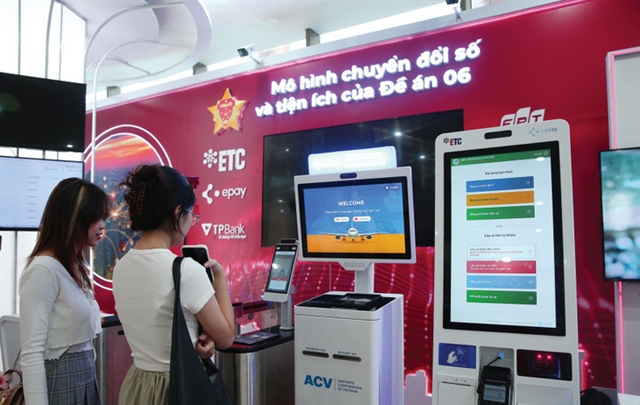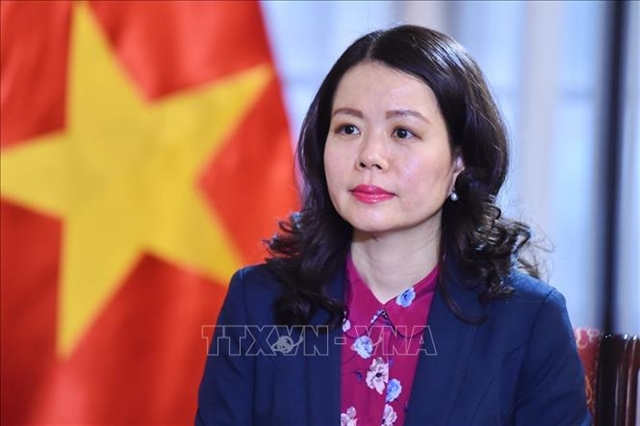 Business Beat
Business Beat


|
| Son Pham, Country Manager, GE Healthcare Vietnam, CEO, GE Vietnam |
As the world embraces a new normal, both technology and healthcare have seamlessly taken centre stage in our lives. Technology now permeates every aspect of life, from GPS to autonomous robots, and we cannot overlook that the healthcare sector’s reliance on digital solutions and technological advancements has risen exponentially too. In a time of high demand and immense uncertainty, technology in healthcare is proving to be the new imperative, especially for countries like Viet Nam which is well poised for a boost in economy and is consistently working towards making their healthcare systems more ready for the future.
Viet Nam is one of the fastest-growing economies in Southeast Asia. According to the Vietnam General Statistics Office, its GDP growth was 7.02% in 2019, the second-highest in a decade behind 7.08% in 2018. Healthcare accessibility has been a priority in Viet Nam. The Government has embarked on a strategic approach in making healthcare accessible from the higher-level hospitals onto lower-level primary healthcare facilities, as part of their universal healthcare initiative, to be achieved by 2030. As healthcare demands grow, so do the challenges. According to Solidance, Viet Nam has 8.6 doctors per 10,000 people. In addition, these practitioners are mainly located in the main cities of HCM City and Ha Noi. The timely emergence of new technology and digitisation solutions can help to bridge this gap.
To that end, Viet Nam has been exploring various technologies such as Tele-ICU to improve healthcare access for its people and has been an opportune solution during crisis situations such as COVID-19. Tele-ICU works as a remote consultation model in collaboration with a hub-and-spoke network of remote ICU consultation solutions. This technology allows patients in remote and distant places to be connected through an off-site command centre to a critical care team, and crucial health information is exchanged in real-time, audio, visual as well as electronic means.
As a testament to the practicability of such systems, the Medical Services Administration of Vietnam’s Ministry of Health, in collaboration with Vietmedical & Informed (members of VMED Group) launched the Vietnam Telemedicine Centre for COVID-19 Outbreak Control in March 2020. Over 200 GE Healthcare patient monitors and ventilators across Northern, Central & Southern Viet Nam and 20 provincial hospitals throughout the country will be connected to this centre in Ha Noi. Through technology, the Centre can integrate its local healthcare IT solutions with GE Healthcare equipment to enable interhospital connectivity.
The recent partnership with Hanoi Medical University Hospital is an example of the many possible collaborations between health-tech companies and government associations in Viet Nam.
Another driver unique to COVID-19 is the use of technology for social distancing. For example, remote monitoring has allowed hospitals to drive isolation workflows in the ICU. Suitable patient monitors connected to one remote site enable a doctor to monitor his patient without making multiple trips to patient premises. The isolation workflow facilitates the virtual sharing of patient data to the allocated intensivists across departments and in some cases, across hospital locations. Minimising physical interaction reduces contamination risk and redundancy, allowing healthcare practitioners to support at-risk patients at critical moments even from a distance.
It is interesting that technology can also be used to support both frontline medical professionals and the equipment they work with. In an environment where there is high patient inflow, hospitals cannot afford equipment to be out of order. With hospitals limiting the number of visitors to their premises, a service engineer may not be allowed to perform a job on-site. Technology allows engineers to dispense their expertise digitally through augmented reality applications and fix simpler cases remotely.
Data gathered by analytical technology is a strong ally as it can be used to program scans of equipment usage and its environmental conditions. This provides engineers with a virtual understanding of the equipment’s conditions, with the hospital’s unique environmental factors taken into consideration. Companies use this data to either ensure that they have the parts, resources and tools available at the time of failure or in some instances, ensure replacement parts are proactively procured to ensure the customer does not face any unplanned downtime.
Finally, the convergence of technology and education must continue, even during a crisis to ensure knowledge and best practices are shared speedily across borders. Local medical societies, medical device companies, clinicians and other members of the healthcare community need to partner with government associations and continue to work together to deliver knowledge in creative ways.
As we stay in the unknown of the outcome of the pandemic, we can all unanimously agree that life will not be the same post COVID-19. Individuals, industries and companies must adapt to the new practices as part of the regular operations for the foreseeable future. Within healthcare, this new norm will mean better patient care outcomes with the adaptation of innovative solutions and digitisation. We would also see a more collaborative approach to drive Viet Nam’s healthcare sector towards its healthcare vision by 2030.




